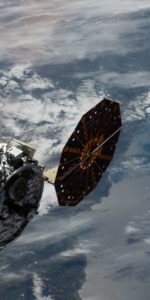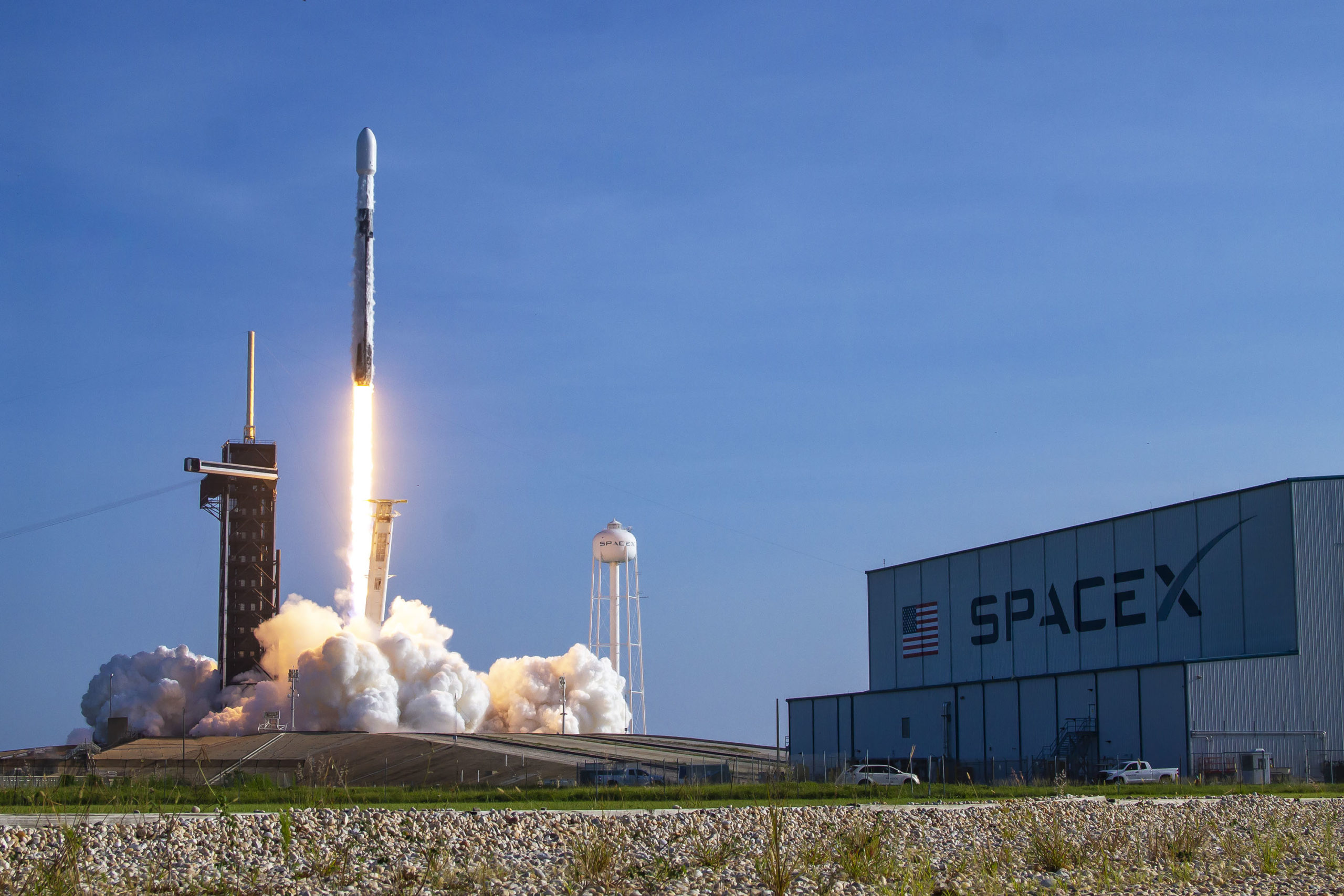
UPDATE – Launch is now set for 3:31pm ET on Wed, June 30. Launch was scrubbed June 29 due to an aircraft on the range
ORIGINAL STORY – After standing down from a planned Friday launch, SpaceX is now targeting Tuesday afternoon for the launch of its multi-payload Transporter-2 mission from storied Space Launch Complex (SLC)-40 at Cape Canaveral Space Force Station, Fla. Flying atop the veteran B1060 core—the fourth Falcon 9 in less than six months to log an eighth mission—it will deliver 88 small spacecraft into Sun-Synchronous Orbit (SSO) at an altitude of roughly 340 miles (550 km), in what SpaceX describes as exhibiting “more customer mass” even than its record-setting 143-satellite-strong Transporter-1 back in January.
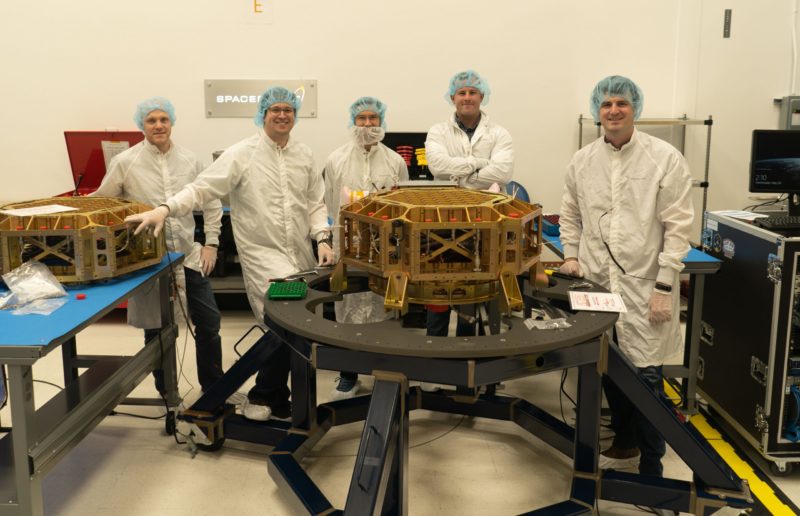
“Targeting Tuesday, 29 June for launch of Transporter-2,” SpaceX tweeted on Friday afternoon, less than 24 hours after formally standing the mission down. On Thursday, the Hawthorne, Calif.-headquartered launch services provider revealed that the “team is taking additional time for pre-launch checkout” and that it would “announce new target launch date once confirmed”.
Whatever appears to be the root cause behind the delay was seemingly resolved rapidly, allowing SpaceX to stick to its existing plan for four Falcon 9 launches in June. And if B1060 flies on Tuesday, it marks the fourth time since last November that as many as four SpaceX birds will have flown in a single calendar month.
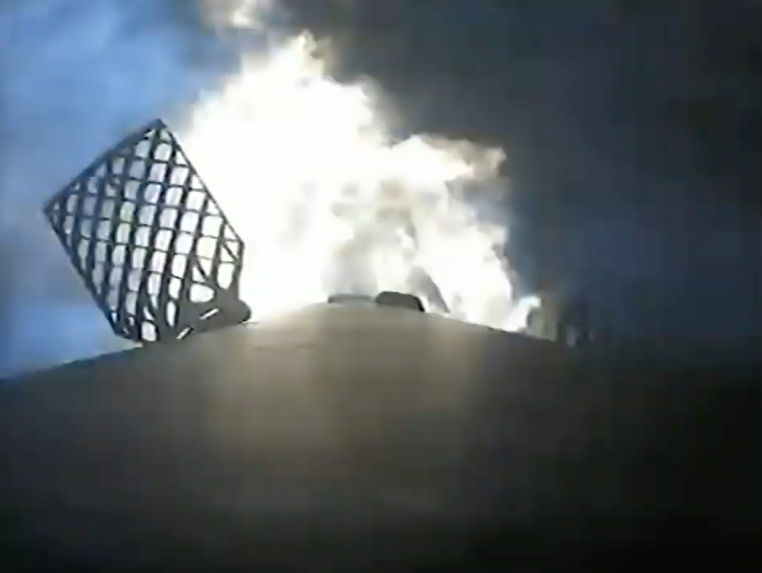
Weather conditions for Tuesday’s opening launch attempt, as well as the backup opportunity on Wednesday, currently stand at 70-percent-favorable. In its L-3 update issued Saturday morning, the 45th Weather Squadron at Patrick Space Force Base noted that a tropical easterly wave targeted to move through the Bahamas later this weekend will likely bring added cloud cover and rain early next week.
However, more settled conditions are anticipated by Tuesday, with a slight risk of violating the Cumulus Cloud Rule and Anvil Cloud Rules associated with inland thunderstorms.
Already this month, a trio of Falcon 9s have lifted SpaceX’s CRS-22 Dragon cargo mission to the International Space Station (ISS)—laden with the first set of Boeing-built ISS Roll-Out Solar Arrays (iROSAs)—together with the SXM-8 high-powered broadcasting satellite for the first leg of its trek up to Geostationary Earth Orbit for New York-headquartered SiriusXM and the fifth Block III Global Positioning System (GPS) navigation and timing sentinel to Medium Earth Orbit for the U.S. Space Force.
Previously, four Falcon 9s roared aloft from the Space Coast in March and May of this year, launching either from SLC-40 at Cape Canaveral Space Force Station or historic Pad 39A at the Kennedy Space Center (KSC). And before that, last November, SpaceX scored three launches from the Florida and one from Vandenberg Space Force Base, Calif. As an added sidenote, a launch next Tuesday will represent the first time since June 2020 that three Falcon 9s have flown in a single month from SLC-40.
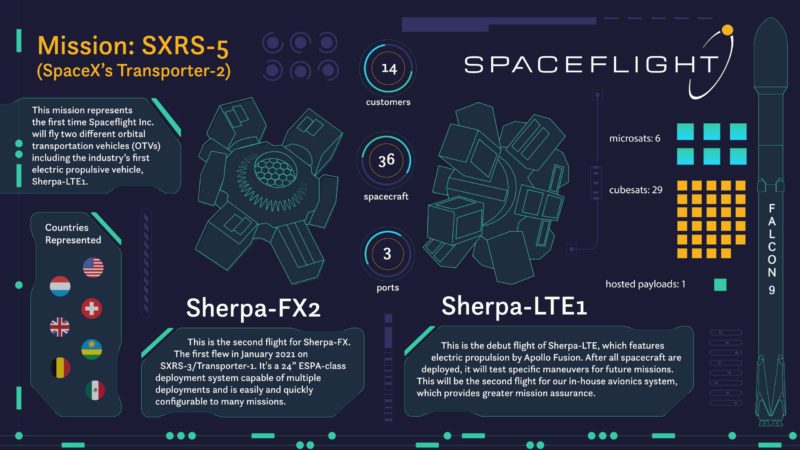
Tuesday’s launch is reportedly targeted to occur during a 58-minute “window”, which opens at 2:56 p.m. EDT; exactly the same window as was planned last Friday.
The booster core earmarked for the Transporter-2 mission is B1060, which first flew last 30 June, almost exactly a year ago, when she provided the muscle to lift the third Block III GPS satellite towards Medium Earth Orbit. Nine weeks later, on 3 September, she launched a second time—cementing a record for the shortest interval between two Falcon 9 flights from the Space Coast—and went on to fly a third mission on 24 October. Both were laden with 60-strong batches of Starlinks. On her third flight, B1060 marked the 100th successful launch of a Falcon-class booster.
But B1060’s real record-setting credentials have been concentrated into the first half of 2021. She flew SpaceX’s first mission of the year on 7 January with Turkey’s powerful Türksat 5A geostationary communications satellite, then was turned around in only 27 days to fly a Starlink payload uphill on 4 February, in what SpaceX touted as “rapid reusability”. This neatly eclipsed the Falcon 9’s previous launch-to-launch turnaround record of only 38 days, set a few weeks earlier and still stands to this day.
More recently, in late March and late April she lifted another pair of 60-strong Starlink batches to orbit. And on her most recent mission, she became the first Falcon 9 core to launch four times in four consecutive months. All told, B1060 has lifted a grand total of 302 primary payloads to orbit, weighing a combined 189,000 pounds (85,700 kg).

With Tuesday’s mission, that number will increase dramatically, for like January’s flight of Transporter-1—and its record-breaking tally of 143 discrete payloads on a U.S. orbital launch vehicle—the upcoming Transporter-2 payload is literally jam-packed with satellites. According to SpaceX, a total of 88 small spacecraft will head uphill: a smaller overall tally of payloads, but representatively “more customer mass” than was seen on Transporter-1.
And in terms of getting an accurate fix on precisely what is heading uphill on this mission, Transporter flights are earning repute as flights we love to hate. The mission is headed for Sun-Synchronous Orbit (SSO), at an altitude of roughly 340 miles (550 km), with an expectation that B1060 will complete its first Return to Launch Site (RTLS) landing on solid ground at Landing Zone (LZ)-1 at the Cape about eight minutes after liftoff.
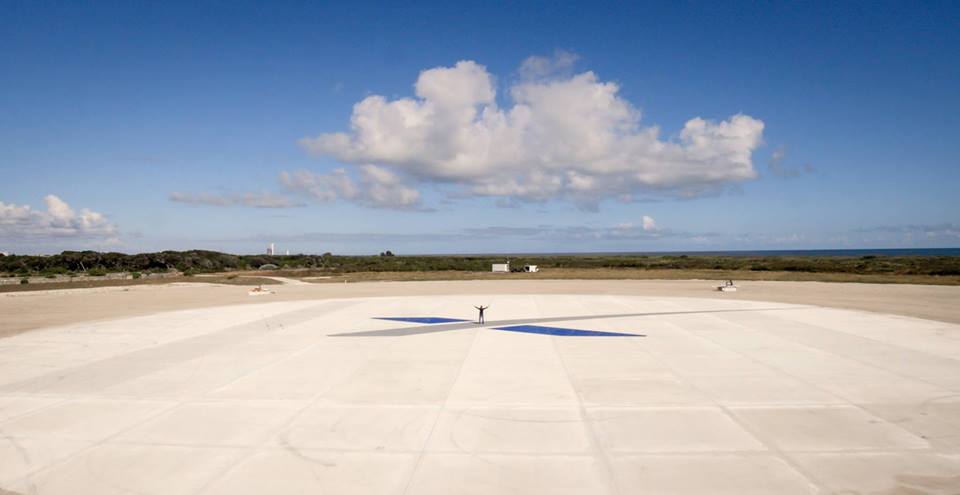
Each of its seven prior missions terminated with oceanic touchdowns on the Autonomous Spaceport Drone Ship (ASDS), situated offshore in the Atlantic Ocean. It will be the first solid-ground touchdown of a Falcon 9 in 2021, the most recent LZ-1 landing having occurred last December following the highly classified NROL-108 mission for the National Reconnaissance Office.
According to SpaceX, some 88 discrete payloads will fly aboard Transporter-2, representing 20 sovereign nations, from Argentina to the United Kingdom, from Finland to the United Arab Emirates and from the Netherland to Thailand. Included in this mammoth haul is Kuwait’s first CubeSat, QMR-KWT—translated from the Arabic language as “Moon of Kuwait”—which is dedicated to student satellite communications technology.
In fact, the entire Transporter-2 payload covers a smorgasbord of disciplines from X-band Synthetic Aperture Radar (SAR) to real-time live-streaming of Earth from space, from technology demonstrations to optical and hyperspectral imaging, from meteorology and maritime observations, from laser communications to amateur radio.
As noted previously by AmericaSpace, 36 of Transporter-2’s payloads are being lifted as part of the SpaceX Rideshare (SXRS)-5 mission with Spaceflight, Inc., using its SHERPA-FX2 and SHERPA-LTE1 commercial dispensers.
Tuesday’s mission will be the 20th Falcon 9 flight of 2021, a remarkable accomplishment for SpaceX. Even last year’s all-time record of 26 launches took until November to get to this point, which puts Elon Musk’s organization in pole position to come close to hitting its target of 48 flights in 2021.
So far, this year has seen 13 flights dedicated to lifting SpaceX’s in-house-built Starlink low-orbiting internet communications satellites, together with two large commercial communications satellites, the Crew-2 and CRS-22 Dragon missions to the ISS, the fifth Block III GPS payload and January’s Transporter-1. Those missions have been accomplished using only nine Falcon 9 booster cores.
.
FOLLOW AmericaSpace on Facebook and Twitter
.
.
Missions » Commercial Space »




